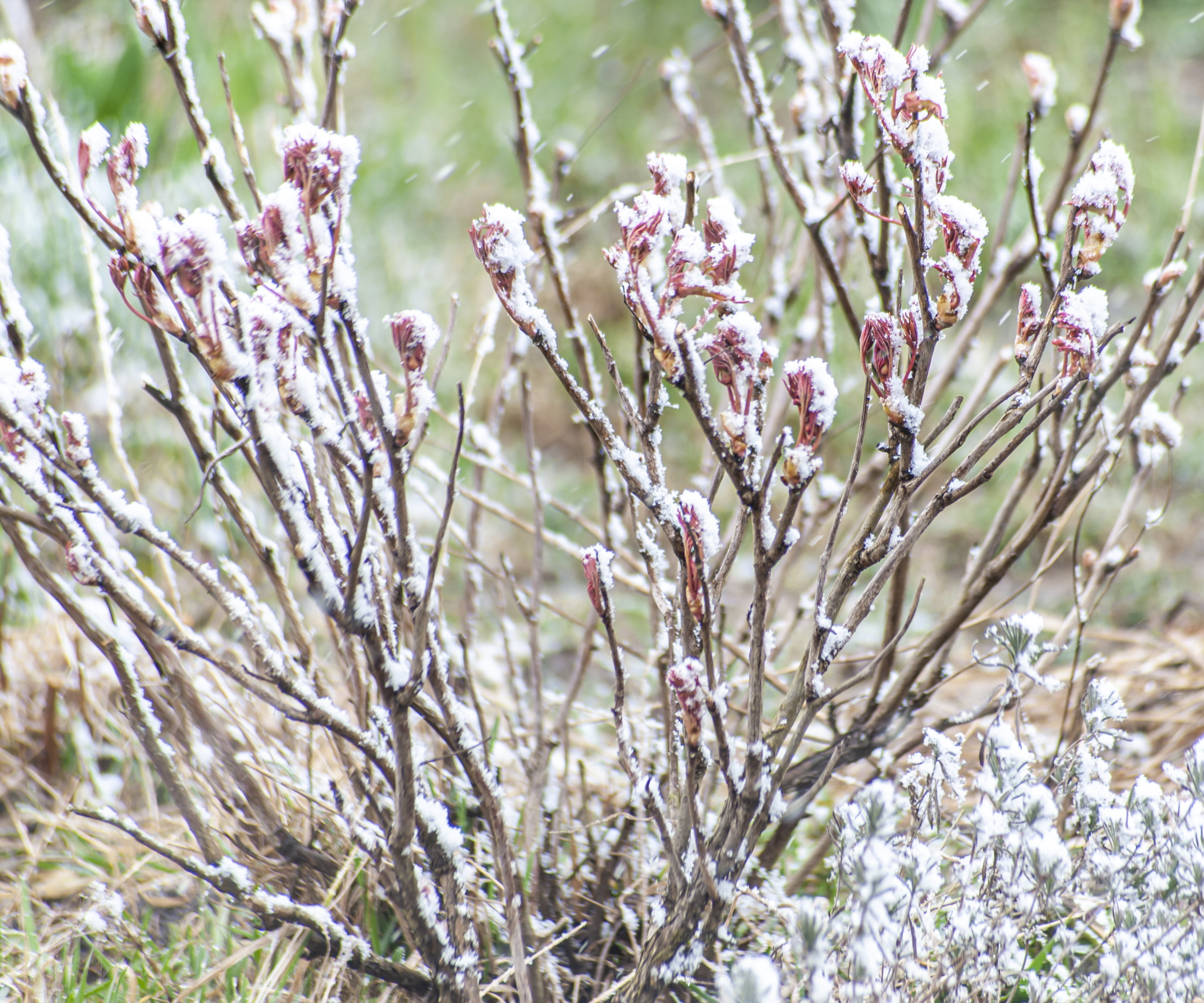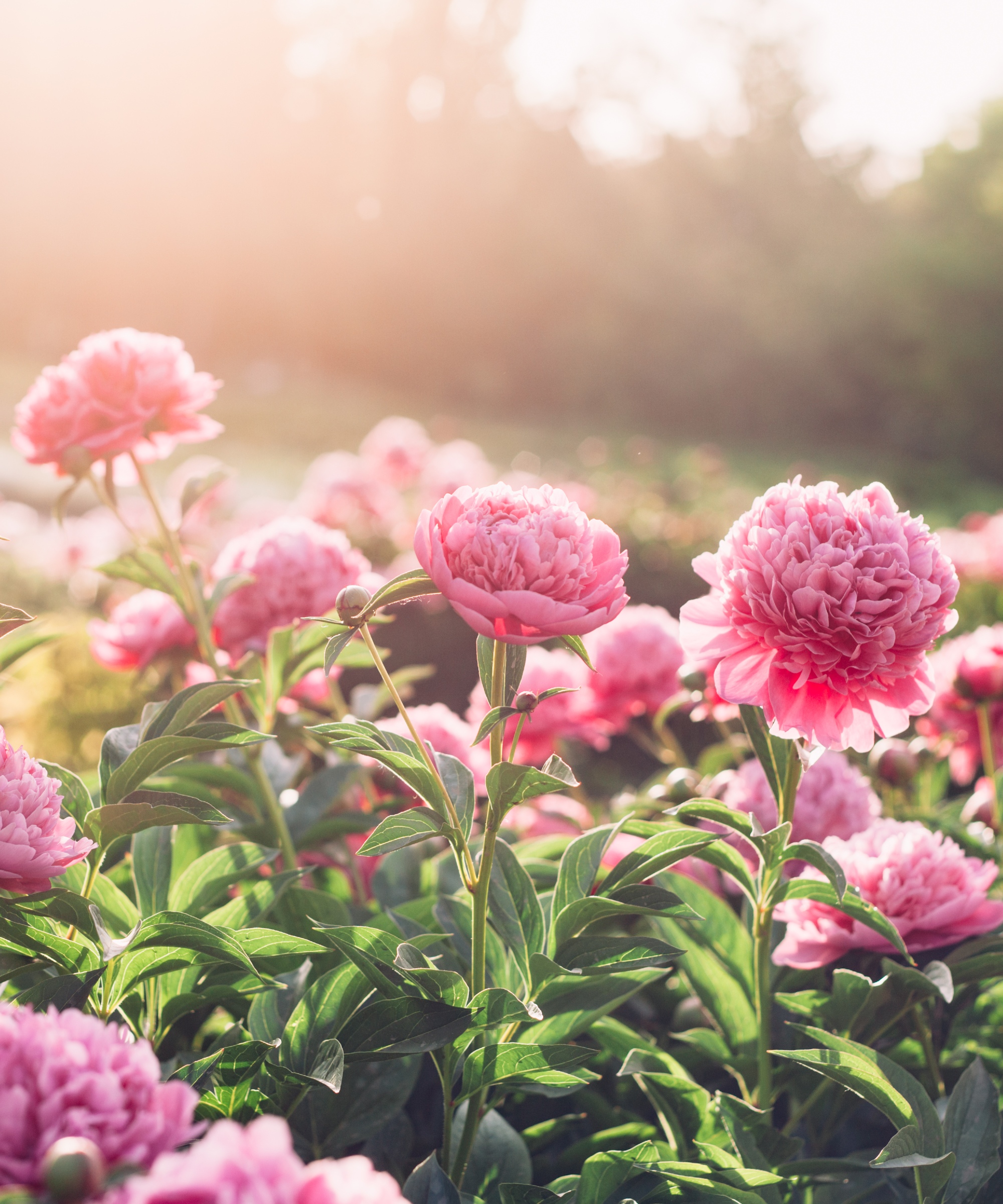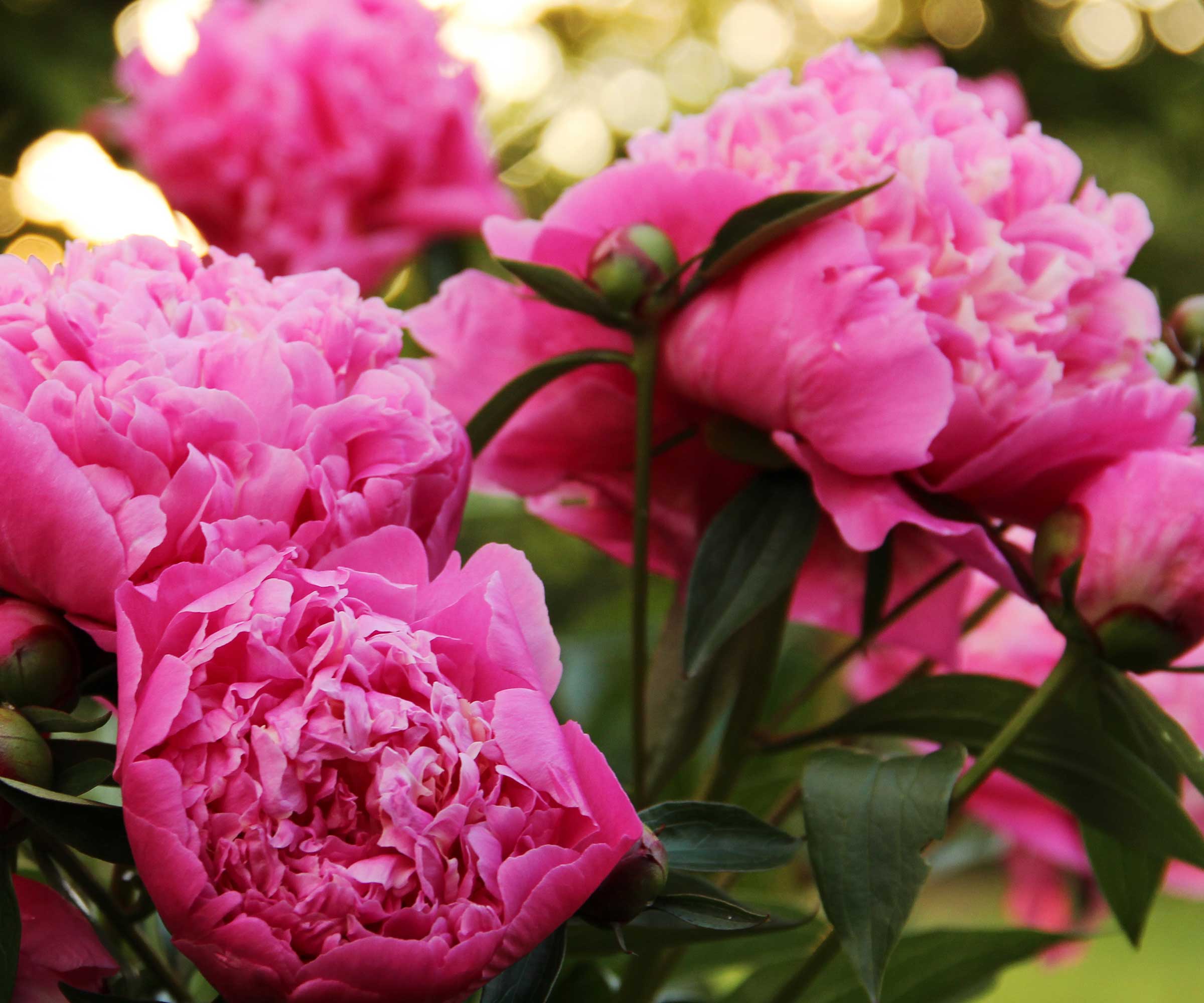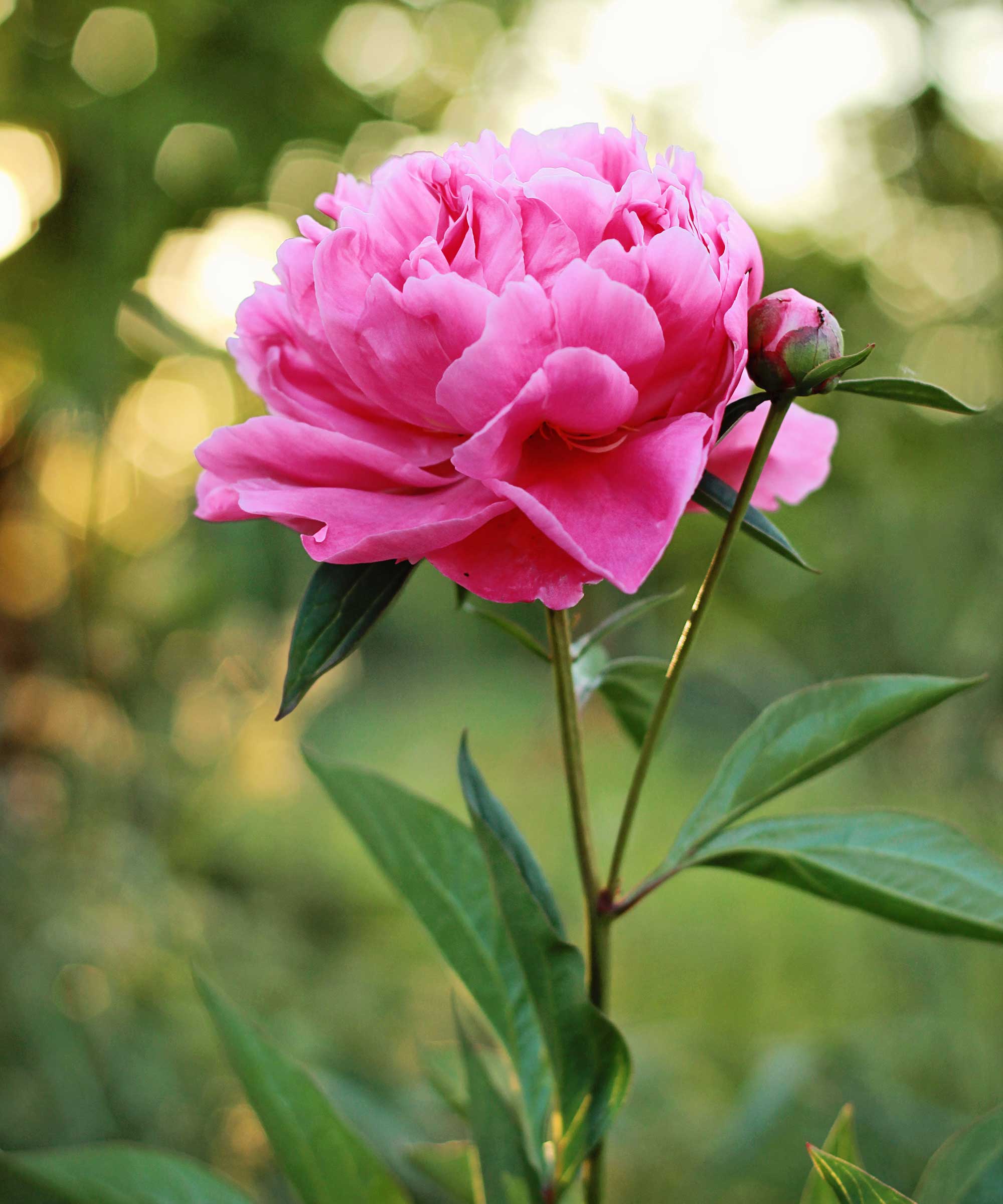How to winterize peonies: keep these beautiful plants safe when temperatures drop
Get a handle on winterizing peonies and you'll be rewarded with bigger and better plants next summer


Their big, blousy, and somewhat fleeting blooms might make you think winterizing peonies is going to be complex. But despite their dreamy, delicate flowerheads, peonies will actually survive the harshest winters, as they are hardy to about -4˚F. In fact, a cold winter means they will flower better and grow back stronger the following summer.
Looking after your beautiful plants properly during winter is a key part of growing peonies successfully. For that reason, it's best to plan ahead and begin preparing them for cold winter weather in fall.
As with other perennials, this is done by cutting back the growth that was made during the current season. This will help to ensure that your plant has enough energy stored over winter and can quickly regrow next spring.

Expert advice for winterizing peonies
To ensure your peonies survive winter and to give them the best chance of blooming in the spring, it's sensible to get them ready before the cold months set in and protect plants from frost. So be sure to add peony prep to your fall gardening checklist.
Knowing how to winterize peonies successfully depends on a few key things. 'It means ensuring your peonies have a nutrient-rich soil, removing any dead or diseased foliage, providing extra insulation during the coldest months, and making sure they have the right amount of light and moisture,' says gardening expert Mike Futia founder of Nerd Lawn. 'With the right level of care and attention, your peonies will be able to survive even the coldest winter months.'

Mike Futia is CEO and founder of Nerd Lawn, a digital publication dedicated to providing the latest news, tips, and advice on how to keep lawns looking their best.

Cutting back peonies for winter
By fall it might look as though your peonies are dying, but in fact they’re in the process of developing flowering buds for the following summer. Even if your peonies look dead, don't be tempted to start cutting back the foliage until late fall as they're still growing. The leaves will also help the plant store energy for next year's flowers.
Before cutting the stems, clean and sharpen your pruning shears to lessen the chance of spreading disease. You can use a pocket blade sharpener, such as this one on Amazon, to keep tools sharp while out in the garden.
Simply cut back everything to about 1 inch above the ground, being careful not to damage the crown of the plant. Generally, peonies require very little pruning, but as with any shrub, it helps to maintain good overall health.
If you find any buds near ground level, leave them. They are often referred to as 'eyes', and they are next year's stems.
Make sure you get rid of any dead foliage carefully to avoid spreading fungal disease (botrytis blight or gray mold), which affects peonies and can survive the winter months in compost heaps.
When it comes to pruning tree peonies, they respond well too. Prune in the fall and either take back the top growth by about a third in stages or, if you have a multi-stemmed tree peony, cut back every third stem to just under an inch (about 2cm).

Mulching peonies in cold weather
In fall, give your peonies a soil treatment before the winter months set in. 'You should begin by applying a thick layer of compost over your peonies, which will help insulate them from the elements and provide essential nutrients that will help them remain healthy throughout the winter,' says Mike Futia.
Known as mulching, this is key to getting the best out of your peony plants. Peonies planted in the ground should be mulched with a few inches of organic matter, such as compost or leaves, to protect their roots over winter.
You can also use straw, pine needles, or bark mulch for winterizing peonies. A good layer of mulch will prevent repeated freezing and thawing of soil that may heave and damage plants, and potentially stop peonies from blooming. In spring remove the mulch as soon as growth resumes. You can take a similar approach when winterizing roses too.

Fertilizing peonies in the fall
'You can also apply a winterizing fertilizer to the plant in fall,' says Zeeshan Haider, CEO and founder of Greenry Enthusiast. 'This will help provide additional nutrients for the plant to help it survive the winter. Be sure to follow the instructions carefully and apply the fertilizer in the appropriate amount.'
In areas with very cold winters, you may want to add an extra layer of cover for your peonies, especially if you want to protect plants from snow. 'Cover the plant with a layer of burlap or other fabric, and secure it with stakes or rocks,' says John Thomas of Backyard Garden Geek. 'This will help to insulate the plant and protect it from the cold.'
If you have tree peonies and live in a colder area, such as USDA zones 4 and 5, try wrapping the bush with burlap in late fall to provide protection against winds in addition to cold temperatures.

Zeeshan Haider is the CEO and founder of Greenery Enthusiast, a blog that provides advice and buying guides on the best gardening machinery and tools.
FAQs
Will peonies survive a cold and frosty winter?
Peonies are perfect for climates with cold weather seasons as they thrive best in the spring when they have had weeks of low temperatures during winter.
'Peonies are winter hardy in USDA hardiness zones 3-8,' says horticulturalist and plant expert Brody Hall of The Indoor Nursery. 'This means they can survive very low temperatures, making them an excellent choice for gardens in cold climates.'
Peonies can suffer frost damage, which would be visible through wilting stems in the morning, but plants tend to bounce back later in the day. This guide might be useful to you if you're interested in propagating peonies, for an even greater show in your yard next year.
Sign up to the Homes & Gardens newsletter
Design expertise in your inbox – from inspiring decorating ideas and beautiful celebrity homes to practical gardening advice and shopping round-ups.
Lifestyle journalist Sarah Wilson writes about flowers, plants, garden design and gardening trends for Homes & Gardens. She has studied introductory garden and landscape design and floristry, and also has an RHS Level 2 qualification in the Principles of Plant Growth and Development. She is a regular contributor to Homes & Gardens and Livingetc. She has also written for Real Homes, Modern Gardens and Country Homes & Interiors magazines.
-
 This is the single best upright vacuum we've ever tested – and it's on offer with $130 off at Shark for a limited time only
This is the single best upright vacuum we've ever tested – and it's on offer with $130 off at Shark for a limited time onlyYou won't want to miss this one
By Dan Fauzi
-
 Nate Berkus says slipcovered sofas are back on trend – and I just found a way to create this designer-approved laid-back look from just $86
Nate Berkus says slipcovered sofas are back on trend – and I just found a way to create this designer-approved laid-back look from just $86This classic style is making a strong comeback, but did you know you don't have to buy a whole new couch to get this Nate-approved look?
By Eleanor Richardson